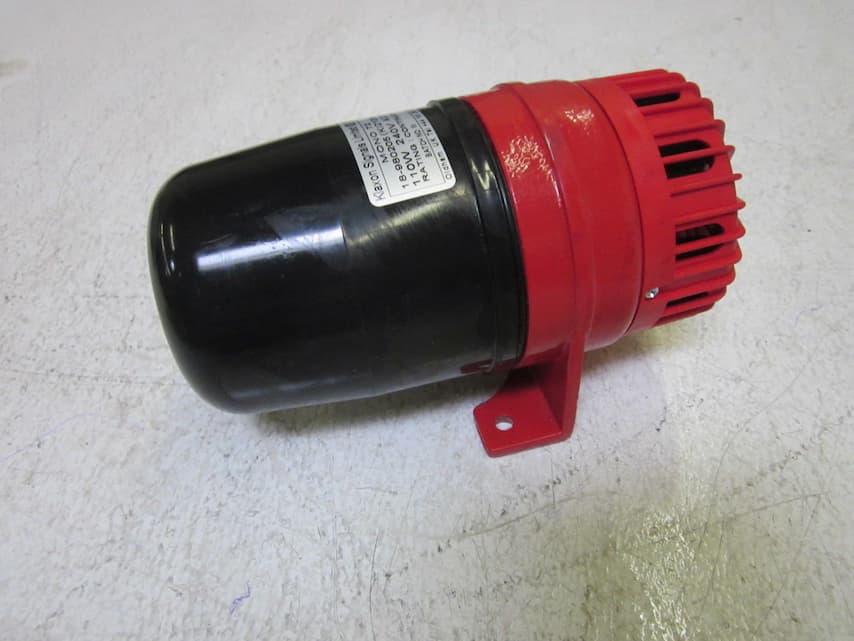No matter if it’s in the workplace, at home, or outdoors, fire alarms and mass notification systems are the most critical modes of communication there are for informing people that a situation exists that demands their immediate attention. These systems are built around a combination of audible and visual signalization, and they’re designed to deliver concise, unambiguous, and easily discernable messages to the people who need to hear them.
These systems are only as good as the warning devices that they’re outfitted with, though. A beacon that can’t be seen from a distance, or when visibility’s impaired isn’t very effective, and a siren that can’t be heard over the sound of machinery or other background noise won’t convey the message that it needs to. The fact is, the window of opportunity that these devices have to do what they were designed to do typically isn’t very large, and they have to get the message out with crystal clarity every time.
Multi-Stage Alarm Devices are Designed to Save Lives

source: electronic-sirens.com
Let’s be honest: as Australia’s need for adaptable threat-conscious notification systems continues to evolve, the flexibility of multi-stage sirens alarms with advanced warning devices has become irreplaceable for keeping people safe, protecting property, and providing the crucial, real-time information that site managers or emergency personnel need to accurately assess a situation before taking action.
Modern fire alarms and notification systems aren’t just designed to be noticeable: they’re designed to be informative. The mass notification procedure for a gas leak or structural fire is going to be vastly different from one that would require people to shelter in place, and tiered, appropriately outfitted mass notification systems are capable of conveying these potentially life-saving distinctions with absolute precision.
Warning Devices That are Built for Any Contingency
Make no mistake: today’s emergency, and fire alarm sounders and sirens have little in common with classic, single-mode alarm bells and strobe lights. These innovative warning devices are built to satisfy a host of dynamic evacuation, notification, and routine signalling contingencies, including:
- Fire and special hazard signalization;
- Incident and mass notification; and,
- Commercial and industrial signalization.
Crucially, these alarm sirens and notification devices are designed and manufactured to satisfy the fire control and emergency notification standards specified in Australian Standards (AS) 1670.4 and 2220.1 for fire and emergency warning systems. That means that they’re designed to work comprehensively and interoperable with a range of detection, warning, control, and intercommunication systems to achieve the following:
- Maximum audible and visual notification coverage;
- Customizable tone, frequency, and verbal messaging; and,
- Maximum survivability, regardless of the emergency.
The fact is, when it comes to signalization that can be used to broadcast routine or emergency communications in a variety of formats, the choices have never been better than they are at this moment. Today’s industrial sirens and fire alarm systems offer instance and event versatility that wouldn’t have been possible only a few years ago, and it is all due to the evolution of the warning devices.
Getting the Message Out in Any Environment with Sirens and Sounders
Regardless of whether they’re intended for use in a residential, commercial, or industrial environment, there are 3 primary environmental variables that have to be considered when choosing alarms and fire sounder devices:
- The distance the siren alarm has to travel;
- The environment the alarm has to travel through; and,
- How high or low the frequency of the alarm needs to be.
Although home alarm sirens may not need the effective range, tonal modulation, or frequency range to penetrate heavy walls and floors that an industrial siren would, they still possess a core of durable, fire-retardant qualities that include:
- Powerful 103 – 127dB outputs;
- IP44 – IP66 dust and water ingress ratings; and,
- Operating temperature ranges between -30°C and 45°C.
Electronic commercial and industrial sounders go even further than standard sirens by making it possible to play pre-recorded MP3 voice messages, or up to 64 system-programmable tones, each based on the nature of the notification.
Combination Sounder Beacons are the Key to Maximized Messaging

source: mroglobalsolutions.com+
LED and xenon beacons, and combination fire alarm sounder beacons bring together the best qualities of audible and visual signalization to create suitable notification systems for any situation. Where machine noise and mandatory hearing protection might otherwise obscure audible warnings, IP66-rated beacons and flashers can instantly make a difference in how quickly people respond in an emergency.
Combination fire sounders with beacons boast a collection of features that include:
- Fully adjustable flash and strobe rates;
- Choices of up to 5 different beacon lens colours; and,
- Independently controllable sounder and beacon connections.
With their ability to provide layered notifications that can be programmed for both public and private signalization, combination sounders with beacons can produce a virtually unlimited number of prioritized audible and visual messages. And their ability to operate totally unimpeded by ambient noise can even help to minimize the stress and confusion that can occur during an emergency.
The Final Word
At the end of the day, it’s important to remember that an effective mass notification system has to be able to satisfy both routine and emergency messaging requirements. And within the scope of its emergency messaging, the system also needs to be capable of providing precise, event-specific information that decision-makers can act upon.
Tiered, multi-stage sirens alarms and advanced warning devices are at the centre of today’s mass notification systems. With the right warning devices, these systems can produce audible and visible signalization for any scenario, helping to ensure that everyone remains as safe as possible at all times.
